
Abstract
Multiple replicate scientific experiments were carried out with controls. These studies looked at cleaning sponge filters. They established that:
- Cleaning a newly established (months) sponge filter under RUNNING unchlorinated well water or RUNNING chlorinated water removed virtually all the beneficial bacteria
- Cleaning a newly established (months) sponge filter by VERY LIGHTLY SWISHING back and forth once or twice in a pail of unchlorinated well water or chlorinated water left significant amounts of beneficial bacteria in the filter.
- Cleaning a LONG ESTABLISHED (years) sponge filter under running unchlorinated well water or chlorinated water left significant amounts of beneficial bacteria in the filter.

First Cleaning Test
The idea that thoroughly cleaning a filter under running water can remove the beneficial bacteria in the brown soup that comes out of the filter was tested. The test proved beyond any doubt that thoroughly cleaning a recently cycled filter will remove the beneficial bacteria from the filter media. After squeezing a recently cycled sponge filter as little as four times the sponge filter needed to be cycled as though it was a new filter.
Test Equipment:
- ten five gallon orange Home Depot Buckets
- air pump and air tubing
- nine mini sponge filters
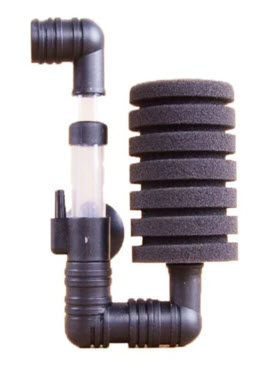
Test Procedure
Nine five-gallon bucket “aquariums” had been set up with these sponge filters and another test run on them, namely a test of bacteria in a bottle products. This test had run for six weeks. These nine buckets and filters were then used for this test.
One bucket aquarium was set up with only about one inch of aquarium gravel in the bottom of the bucket and no sponge filter. This bucket only had an air stone in it. This was the “control” and was designed to test the hypothesis that substrate acts as a biofilter. That gave ten buckets
The sponges were then cycled for four weeks using ammonia and powdered protein and inoculate from an established sponge filter. Water was only added to make up for evaporation. This gave sponge filter media which had been building up a sizable load of beneficial bacteria in their pores for ten weeks.
The bucket with aquarium gravel had a large amount of brown “soup” from established sponge filters added to seed the gravel with beneficial bacteria.
A “squeeze test” was then run on nine sponge filters. Well water was used. Therefore chlorine was not a concern. Each sponge filter was thoroughly squeezed under running tap water for a set number of times (0 times to 8 times).
The filters were then put back into their respective pails and a time to cycle test run. Eight ppm of ammonia was added every three days. The ammonia levels were then measured after three days of running and every three days thereafter, just prior to adding new ammonia.
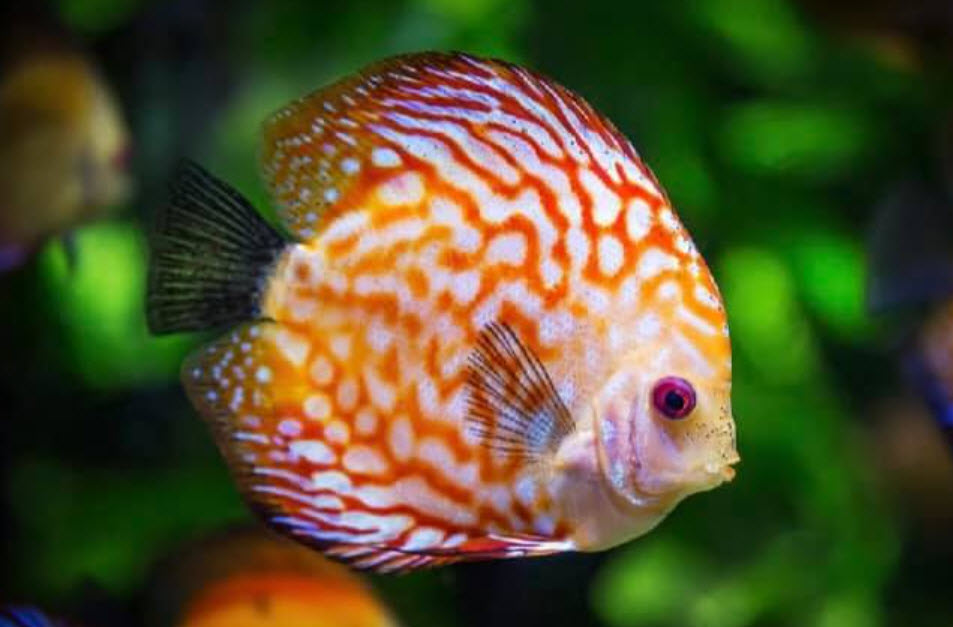
Results
This is the results of the test in ppm of ammonia:
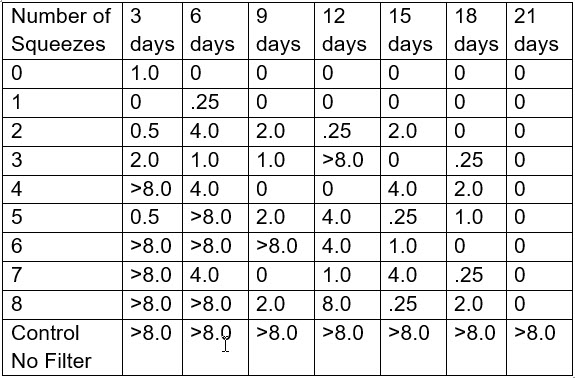
Now all natural processes such as cycling tend to be very erratic and the data has a lot of “noise”. But the trend is very clear. Thorough cleaning of the “brown gunk” in a filter will start an aquarium on another cycle.
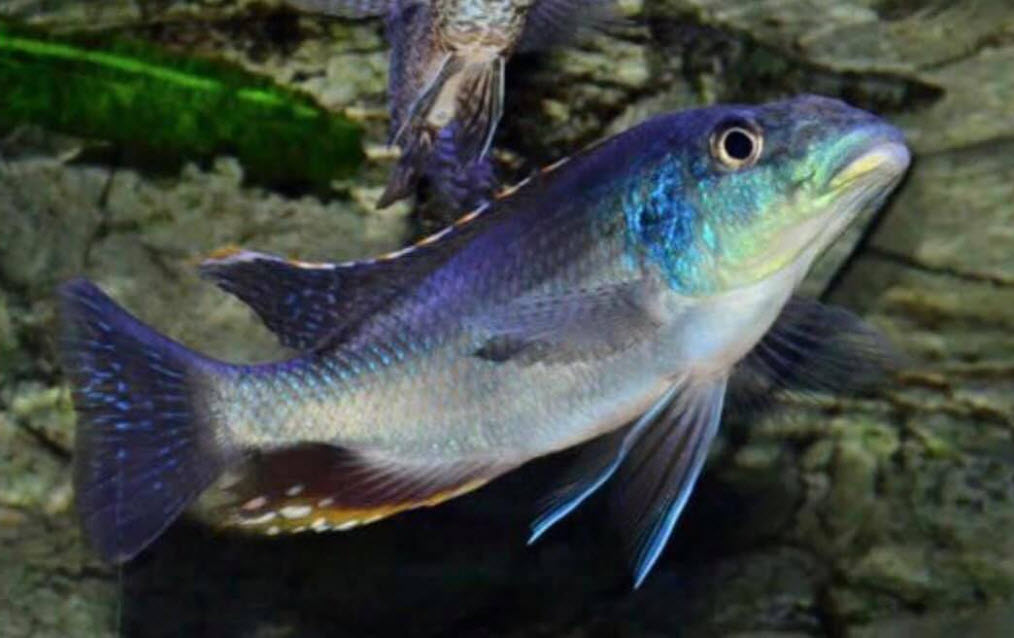
The test results were not expected. By conventional wisdom a sponge filter which had been squeezed even eight times should be able to come back in 6 to 9 days. 18 days is a long time. Apparently beneficial bacteria are less adherent to the cycled foam than conventional wisdom predicts.
This test also puts to bed the myth that substrate can cycle an aquarium without a filter in the aquarium. The control with the substrate alone did not cycle at all.
It is important to note that this analysis only applies to new sponge filters which have just been newly cycled. One of the myths of fish keeping is that beneficial bacteria in a filter stop reproducing when they hit the limit on food. This is incorrect. The beneficial bacteria simply reproduce slower. So a level eight times the level at the end of cycling can be reached in as little as thirty days. As a result it is very difficult if not impossible to over clean a long established filter.
I have been keeping fish for fifty years and I have seen ammonia readings many times when cycling a new aquarium. I have never ever had an ammonia reading on a long established aquarium, no matter how thoroughly I might have cleaned the filter.

Established Filter and Chlorinated Water Cleaning Tests
Abstract
The idea that a well-established filter holds its beneficial bacteria much more than a newly established filter was tested. The test proved beyond any doubt that well-established filters are more difficult to clean of beneficial bacteria than newly established filters. Recently cycled sponge filters that were cleaned had small ammonia spikes while well-established sponge filters had no ammonia spikes after cleaning.
The idea that chlorine in water kills beneficial bacteria was also tested. The test clearly showed no reduction in beneficial bacteria with chlorinated water.
Test Equipment:
- Ten five-gallon orange Home Depot Buckets
- Air pump and air tubing
- Four mini sponge filters that had been running for four months
- Four DIY 20 ppi Poret Sponge filters that had been running four years
- One mini sponge filter that was new
- Aquarium gravel
- Clorox bleach

Test Procedure
Four sponge filters had various tests run on them for four months total. These four filters had a complete compliment of beneficial bacteria in them. Another set of four sponge filters were taken from long established breeding tanks. These sponge filters were 20 ppi Poret sponge cubes which had been used for at least four years and maybe longer.
These eight sponge filters were then lightly cleaned in tubs of water. The tubs were filled with well water to about three inches in depth. The water in the tubs was conditioned with four levels of chlorine: 2 ppm, 1 ppm, 0.5 ppm and no chlorine.
One bucket aquarium was set up with only about one inch of aquarium gravel in the bottom of the bucket and no sponge filter. This bucket only had an air stone in it. This was the “control” and was designed to test the hypothesis that substrate acts as a biofilter. Another “control” was set up with a new mini sponge filter that had not been cycled or cleaned. That gave ten buckets.
The bucket with aquarium gravel had a large amount of brown “soup” from established sponge filters added to seed the gravel with beneficial bacteria.
The filters were then put into their respective pails and a time to cycle test run. Eight ppm of ammonia was added every three days. The ammonia levels were then measured after three days of running and every three days thereafter, just prior to adding new ammonia.

Results
This is the results of the test in ppm of ammonia:
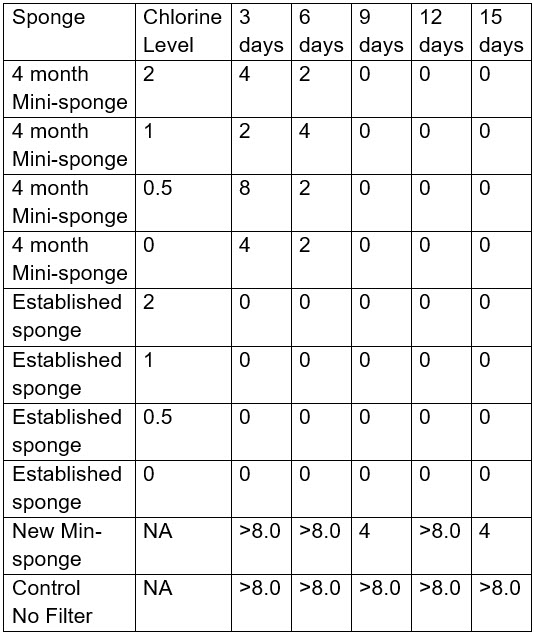
This test established that chlorinated water has no affect on beneficial bacteria. There was no significant difference in the different levels of chlorine and time to cycle. There is a myth constantly parrotted on social media that one needs to clean the filters and filter media in tank water. Supposedly this prevents the chlorine in tap water killing all the beneficial bacteria in the filter. The testing above proved this idea to to be false.
This also rather conclusively proves that long established filters are affected by cleaning much less than filters established for shorter times. This could be due to the number of bacteria being much greater or due to the bacteria being much more adherent to the filter. Most likely it is both reasons.
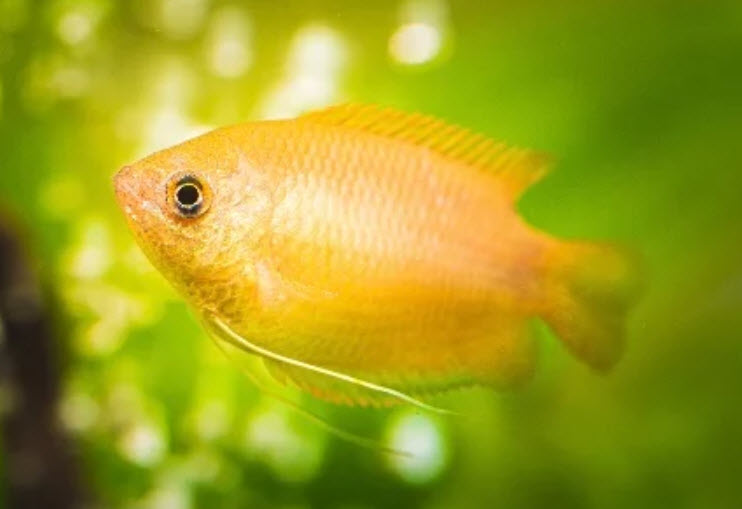
Test #2 Flowing Tap Water and Chlorine
The test was then run again. Only this time instead of rinsing in tubs the sponges were rinsed for one minute in running tap water with only light squeezing. Half the sponges were cleaned under the running well water tap. Half the sponges were rinsed in running chlorinated water (0.5 ppm total chlorine) for one minute with only light squeezing. The results were surprising:
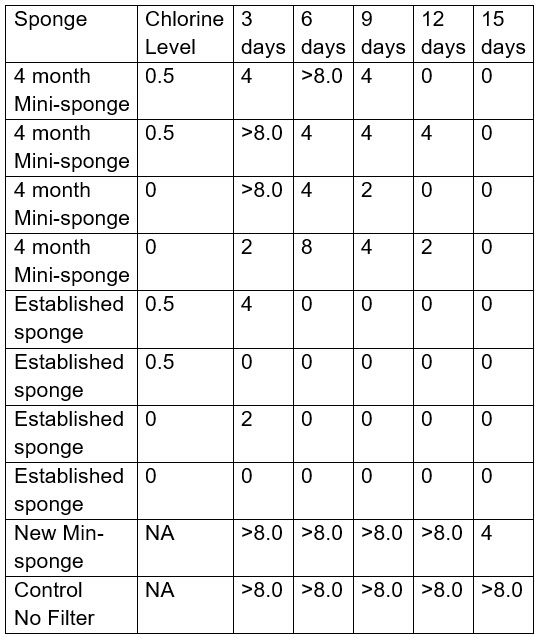
This clearly shows that running water washes away significantly more beneficial bacteria than does swishing in a tub. This explains why people are so adamant that rinsing in chlorinated tap water gives ammonia spikes. It’s not the chlorine that is the problem, it is the rinsing that is the problem.
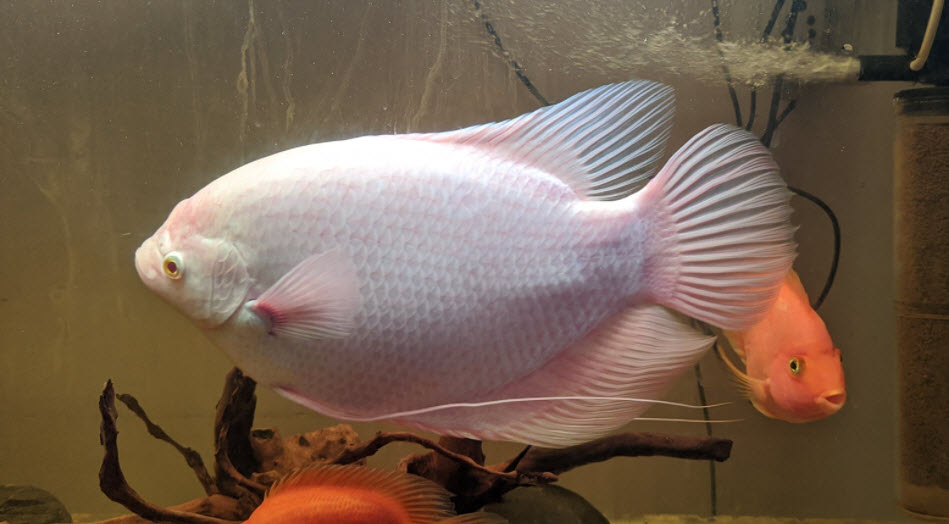
.
Return to Filtration Menu
.
Aquarium Science Website
The chapters shown below or on the right side in maroon lead to close to 400 articles on all aspects of keeping a freshwater aquarium. These articles have NO links to profit making sites and are thus unbiased in their recommendations, unlike all the for-profit sites you will find with Google. Bookmark and browse!
.

Leave a Reply